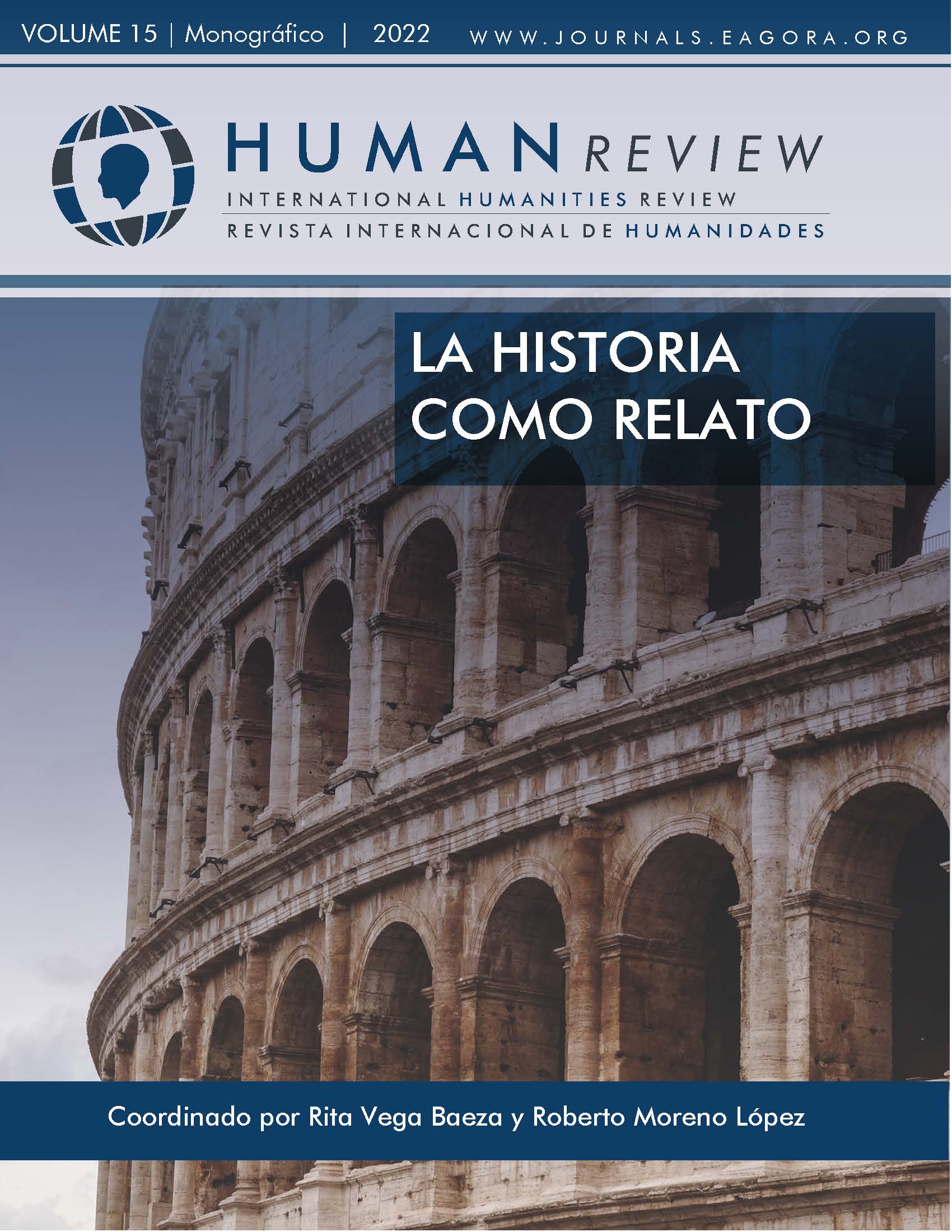The preferred story to be told
Adaptation of the figure of the Cid in a didactic-moral text of the 15th century
DOI:
https://doi.org/10.37467/revhuman.v11.4216Keywords:
Cid, Valerio de las historias escolásticas y de España, Exemplum, Model, AdaptationAbstract
Historical and biblical figures have often been used as a didactic and moral resource, becoming models for a significant part of society. In this process of transformation, an important ideological component, which selects which aspects of the life of these characters can or cannot be told and how this should be done, appears. This study aims to analyse how these reference figures are adapted in the didactic-moral texts of the 15th century, taking as an example the change that the figure of the Cid undergoes in Diego Rodríguez de Almela’s book Valerio de las historias escolásticas y de España.
References
Bibliografía primaria
Rodríguez de Almela, D. (1994). Valerio de las estorias escolásticas e de España, edición facsímil, ed. Juan Torres Fontes, Real Academia Alfonso x el Sabio.
Rodríguez de Almela, D. (1793). Valerio de las estorias escolásticas e de España, ed. Juan Antonio Moreno. https://acortar.link/yCZfAf
Valerio Máximo, (2014). Facta et dicta memorabilia, eds. Schnibes, Caballero de del Sastre, Tola y otros, Editorial de la Facultad de Filosofía y Letras Universidad de Buenos Aires.
Bibliografía secundaria
Alvar, C. (2002). El Poema de mio Cid y la tradición épica: breves comentarios, En El Cid: de la materia épica a las crónicas caballerescas. Servicio de publicaciones de la Universidad de Alcalá de Henares, pp. 9-21.
Alvar, M. (2001). El Cid personaje real, En El Cid. Historia, literatura y leyenda. G. Santoja (coord.). Sociedad Estatal España Nuevo Milenio.
Bizarri, H. (2019). La otra mirada: El exemplum histórico. LIT Verlag Romanistik.
Di Camillo, O. (2016). El humanismo castellano en el siglo xv. Biblioteca Virtual Miguel de Cervantes.https://www.cervantesvirtual.com/descargaPdf/el-humanismo-castellano-del-siglo-xv/
Fletcher, R. (2001). El Cid. Nerea.
G.Pattinson, D. (2002). El mio Cid del Poema y el de las crónicas: Evolución de un héroe. En El Cid: de la materiaépica a las crónicas caballerescas. Servicio de publicaciones de la Universidad de Alcalá de Henares, pp. 23-27.
Lacarra, J. M. (1983). Ideales de la vida en la Edad Media del siglo xv: El caballero y el moro. Aragón en la edad Media, pp. 303-319.
Martínez Díez, G. (1999). El Cid histórico. Un estudio exhaustivo sobre el verdadero Rodrigo Díaz de Vivar. Planeta.
Martínez López-Morás, S. (2018). Las primeras lides cidianas en la Crónica de Castilla: algunas hipótesis. Medioevo Romanzo.
Menéndez Pidal, R. (1967). La España del Cid. Espasa Calpe.
Montaner Frutos, A. (2001). De don Rodrigo Díaz al Cid: el surgimiento de un mito literario. En El Cid. Historia, literatura y leyenda. G. Santoja (coord.). Sociedad Estatal España Nuevo Milenio.
Porrinas, D. (2019). El Cid: historia y mito de un señor de la guerra. Desperta Ferro.
Ronaldo Carrasco, M. (2006). El exemplum como estrategia persuasiva en la rethorica christiana (1579) de fray Diego Valadés, Red Anales del Instituto de Investigaciones Estéticas. http://www.scielo.org.mx/scielo.php?script=sci_arttext&pid=S0185-12762000000200002
Von Moos, P. (1988). Geschichte als Topik. Der rethorische Exemplum von der Antike zur Neuezeit und die, historiae’ im Policraticus Johanns von Salisbury, Georg Olms Verlag.
Downloads
Published
How to Cite
Issue
Section
License
Those authors who publish in this journal accept the following terms:
- Authors will keep the moral right of the work and they will transfer the commercial rights.
- After 1 year from publication, the work shall thereafter be open access online on our website, but will retain copyright.
- In the event that the authors wish to assign an Creative Commons (CC) license, they may request it by writing to publishing@eagora.org









